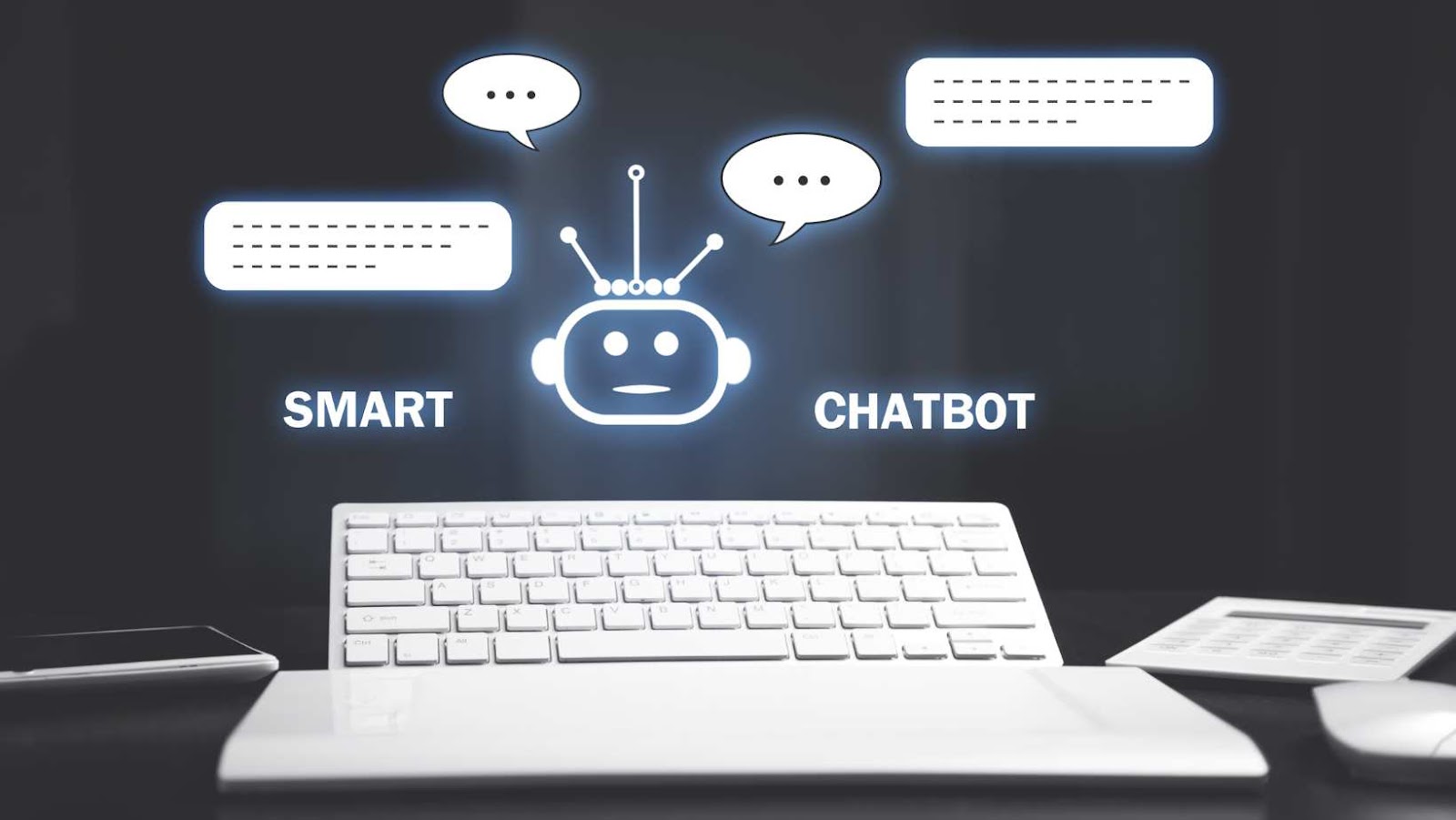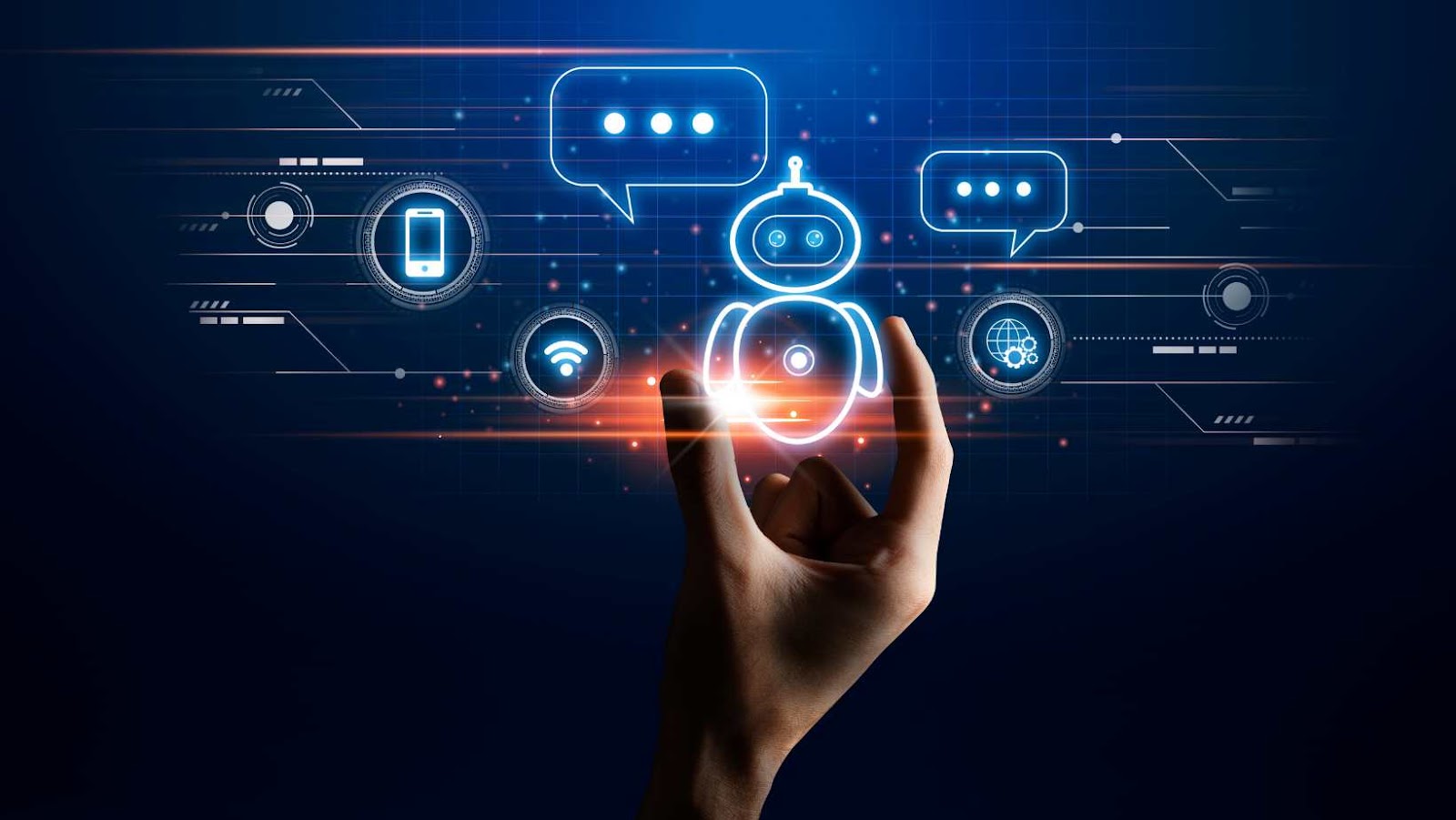Chatbots have dramatically changed how businesses interact with their customers. In recent years, chatbots have become a staple in customer service, sales, and support operations, offering 24/7 assistance and streamlined communication.
However, not all chatbots are created equal. AI voice chatbots and traditional chatbots represent two distinct types of chatbot technology, each offering unique capabilities.
Here we will examine the main differences between AI voice chatbots and traditional chatbots and how these differences affect businesses looking to improve their customer service.

What Are Traditional Chatbots?
Traditional chatbots, often referred to as rule-based chatbots, operate based on predefined scripts and keyword recognition. They are typically programmed to recognize certain words or phrases and respond accordingly. This type of chatbot is widely used for basic customer service tasks such as answering frequently asked questions or guiding users through simple processes.
Traditional chatbots can be quite effective for straightforward, routine inquiries. However, their functionality is limited. If a customer asks a question that falls outside the chatbot’s script or uses language that the bot doesn’t recognize, the chatbot may fail to provide an accurate or helpful response.
Advantages of Traditional Chatbots
- Simplicity and Cost-Effectiveness: Since traditional chatbots rely on a set of rules, they are generally easier and cheaper to develop and deploy compared to their AI-driven counterparts.
According to a report by Grand View Research, Inc., the global chatbot market size was estimated at USD 5,132.8 million in 2022 and is expected to expand at a compound annual growth rate (CAGR) of 23.3% from 2023 to 2030. - Predictability: Traditional chatbots operate in a controlled environment, making it easier for businesses to predict how the bot will respond to specific queries.
- Quick Implementation: These chatbots can be implemented quickly, making them an attractive option for businesses looking for a fast solution to handle customer inquiries.
What Are AI Voice Chatbots?
AI voice chatbots, on the other hand, are powered by artificial intelligence (AI) technologies like natural language processing (NLP) and machine learning (ML). They are designed to understand human language in both text and voice formats, enabling more dynamic and natural interactions. AI voice chatbots don’t rely on scripts or predefined rules. Instead, they use data and algorithms to interpret and respond to customer queries in real time.
Unlike traditional chatbots, AI chatbot with voice have the ability to engage in contextual conversations, meaning they can understand the intent behind a customer’s words and respond more intelligently. They also have learning capabilities, enabling them to improve their responses over time based on previous interactions.
Related Articles:
- Importance of Inventory Tracking System for Small Business
- Why AI Voice Chatbots are Essential for Modern Healthcare Services?
- Why You Should Hire Local Developers?
Advantages of AI Voice Chatbots
- Natural Conversations: AI voice chatbots can engage in more fluid and human-like conversations. Their ability to process natural language allows them to understand various accents, dialects, and tones.
Gartner predicts that by 2025, 80% of customer service and support organizations will be applying generative AI technology in some form to improve agent productivity and customer experience (CX), emphasizing the shift towards more natural and engaging communication. - Improved Accuracy: By learning from past conversations, AI voice chatbots can continuously improve their accuracy and offer more relevant responses to customer queries.
- Personalization: These chatbots can provide personalized responses based on a customer’s previous interactions, leading to a more customized user experience.
- Voice Recognition: AI voice chatbots are equipped with voice recognition technology, enabling hands-free, seamless interactions. This is particularly useful for mobile applications and smart devices.
- Multitasking and Scalability: AI voice chatbots can handle multiple tasks and conversations simultaneously, making them highly scalable for businesses with large customer bases.

Tip: Whether you’re considering the implementation of an AI voice chatbot or a traditional chatbot for your business, App-Scoop is here to help you navigate your options. Our team of experts understands the unique benefits and functionalities of both types of chatbots, ensuring that you choose the right solution according to your specific needs.
We specialize in developing intuitive, efficient chatbots that enhance customer engagement, streamline operations, and improve overall satisfaction.
AI Voice Chatbots Vs Traditional Chatbots
| AI Voice Chatbots | Traditional Chatbots | |
| Conversational Ability | Capable of engaging in natural, dynamic, and fluid conversations using NLP. Understands user intent and context. | Limited to rule-based conversations and pre-programmed responses. Conversations are linear. |
| Learning Capability | Uses machine learning to learn from past interactions, improving and adapting over time. | No learning capabilities. Responses remain static and do not evolve. |
| Personalization | Offers personalized responses based on user data, preferences, and conversation history. | Provides generic, one-size-fits-all responses with no personalization. |
| Integration with Voice Tech | Easily integrates with voice-enabled devices like smart speakers and mobile apps, enabling hands-free interactions. | Text-based and does not support voice functionality, limiting usability. |
| Accuracy & Context Understanding | Highly accurate in understanding user intent and analyzing conversation context for relevant responses. | Struggles with queries outside pre-defined scripts, leading to inaccurate responses. |
| Response Flexibility | Can adapt to various queries and provide real-time, dynamic responses. | Responds to specific triggers or keywords, may fail with unfamiliar or complex queries. |
| Cost and Development Time | Higher upfront costs due to advanced AI, NLP, and voice recognition technology. More time-consuming to develop. | Cheaper and quicker to develop and deploy, suitable for basic customer needs. |
| Data Utilization | Leverages large datasets for performance improvement, user behavior understanding, and business insights. | Does not utilize data beyond initial programming, offers no business intelligence. |
| User Experience | Provides a more engaging, intuitive, and interactive experience, resolving issues efficiently. | Offers a rigid, less engaging experience, potentially frustrating users with complex queries. |
Which One Is Right for Your Business?
The decision between AI voice chatbots and traditional chatbots depends largely on your business needs and goals. For companies seeking to handle simple, routine queries at a lower cost, traditional chatbots may be sufficient. However, for businesses aiming to deliver a more personalized, scalable, and sophisticated customer experience, investing in AI voice chatbots is the way forward.

As customer expectations continue to rise, the demand for advanced, AI-driven chatbot solutions will only grow. While traditional chatbots offer simplicity and affordability, AI voice chatbots provide the intelligence, flexibility, and scalability that modern businesses require to stay competitive.
Frequently Asked Questions
What is the difference between an AI voice chatbot and a traditional chatbot?
An AI voice chatbot uses voice recognition and natural language processing (NLP) to interact with users via voice commands, while a traditional chatbot interacts through text-based messages. AI voice chatbots can provide a more human-like experience.
How do AI voice chatbots understand user input?
AI voice chatbots understand user input through voice recognition algorithms and NLP techniques that interpret speech, converting it into text to generate appropriate responses. They then respond back through voice output.
Can AI voice chatbots handle complex tasks?
Yes, AI voice chatbots can handle complex tasks that involve speech recognition, context understanding, and multi-turn conversations. They are also capable of learning and improving through continuous interaction, which makes them more effective than traditional text-based chatbots.
Which is more user-friendly: AI voice chat bots or traditional chatbots?
AI voice chatbots are generally more user-friendly in environments where hands-free interaction is needed, such as in cars, smart home devices, or for individuals with accessibility challenges. Traditional chatbots are more suitable for text-based communication on websites or messaging platforms.
Do AI voice chatbots require special hardware?
AI voice chatbots typically require hardware that supports voice recognition, such as smartphones, smart speakers, or computers with microphones. Traditional chatbots only need devices with internet access and a text interface.
Are AI voice chatbots more expensive than traditional chatbots?
Yes, AI voice chatbots are generally more expensive to develop and implement due to the need for advanced speech recognition technology, NLP, and integration with various systems. Traditional chatbots are simpler and usually more cost-effective.
How do traditional chatbots handle complex queries?
Traditional chatbots handle complex queries by using predefined scripts and decision trees. They rely on text-based interactions to guide users through a series of steps to resolve issues, though they may require human assistance for more complicated tasks.
Can both AI voice chatbots and traditional chatbots be integrated into existing systems?
Yes, both types of chatbots can be integrated into existing systems such as CRM platforms, customer support tools, or e-commerce systems, although AI voice chatbots may require more complex integration due to the need for voice recognition features.
Which chatbot type is better for businesses?
The choice depends on the business’s goals. AI voice chatbots are ideal for businesses that want to offer hands-free, personalized, and interactive customer experiences, while traditional chatbots are well-suited for simple queries and cost-effective solutions.
How do I decide between an AI voice chatbot and a traditional chatbot?
Consider factors such as user preferences, the complexity of tasks, and the nature of the business. AI voice chatbots are suitable for environments requiring voice interaction, while traditional chatbots are best for simple text-based customer service.










